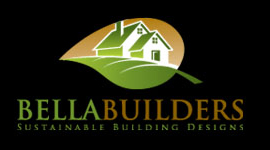- Improves aesthetics
A well designed and maintained Living Wall can significantly enhance a building’s appearance – whether it’s to add a new aesthetic dimension, refresh a tired façade or add colour and texture to a complete wall or section.
- Regulate temperature and reduce carbon footprint
A Living Wall used on appropriate elevations can reduce energy costs by both providing an additional layer of insulation in the winter (keeping heat in) and acting as a screen to the sun in the summer (keeping the building cool).
- Protect building façades
Living Wall systems can help to protect a building’s façade and extend its life, acting as an effective shield to heavy rain and hail and helping to protect from the damaging effects of UV light.
- Provide wildlife habitats
With a strong base from the trellis and appropriate planting, a Living Wall can provide an ideal habitat for wildlife. In many cases, it can also provide an alternative habitat for any wildlife displaced during construction, with the option of integrating bird houses within the structure.
- Improve air quality
A Living Wall in an urban area can help improve local air quality, both by absorbing carbon dioxide and releasing oxygen, and by trapping dust and other pollutants.
- Deter graffiti
In areas where graffiti is a potential problem, Living Walls can act as an effective deterrent, making the application of graffiti to the building structure almost impossible.
- Reduce noise
By adding a layer of insulation (both thermal and acoustic) Living Walls absorb sound – making a positive impact for both the building’s occupants and the local environment.
Living Wall Applications
Living Wall technology may be used for a wide variety of projects – both new build and refurbishment for a variety of building types.
From small garden projects to large industrial and commercial developments, the benefits of Living Wall systems are being realised across the public and private sectors.
With carbon reduction targets a key focus for many public sector organisations (particularly schools and hospitals), Living Walls can play a contributory role, significantly helping to reduce a building’s carbon footprint.
In schools the systems can also deliver educational benefits, encouraging pupils to engage with the problems of carbon reduction and climate change and with broader ecological and environmental issues. Specific systems can be designed to suit a range of plant types, and as a habitat for different wildlife.
Living Wall systems require very few small fixings and therefore the impact on, or potential for damage to a building’s façade is minimal. Similarly, the system is set away from the wall so, with the correct plant choice, plants will not damage the façade and systems may be used with confidence on existing buildings, even those that may be listed.
Recent developments in vertical faming techniques also demonstrate the potential and versatility of Living Wall systems. Using large urban structures to grow crops on their facades, buildings would become ‘farmscapes’ – effectively with Living Walls providing a sub-structure to support the growth of crops such as fruit and vegetables.

